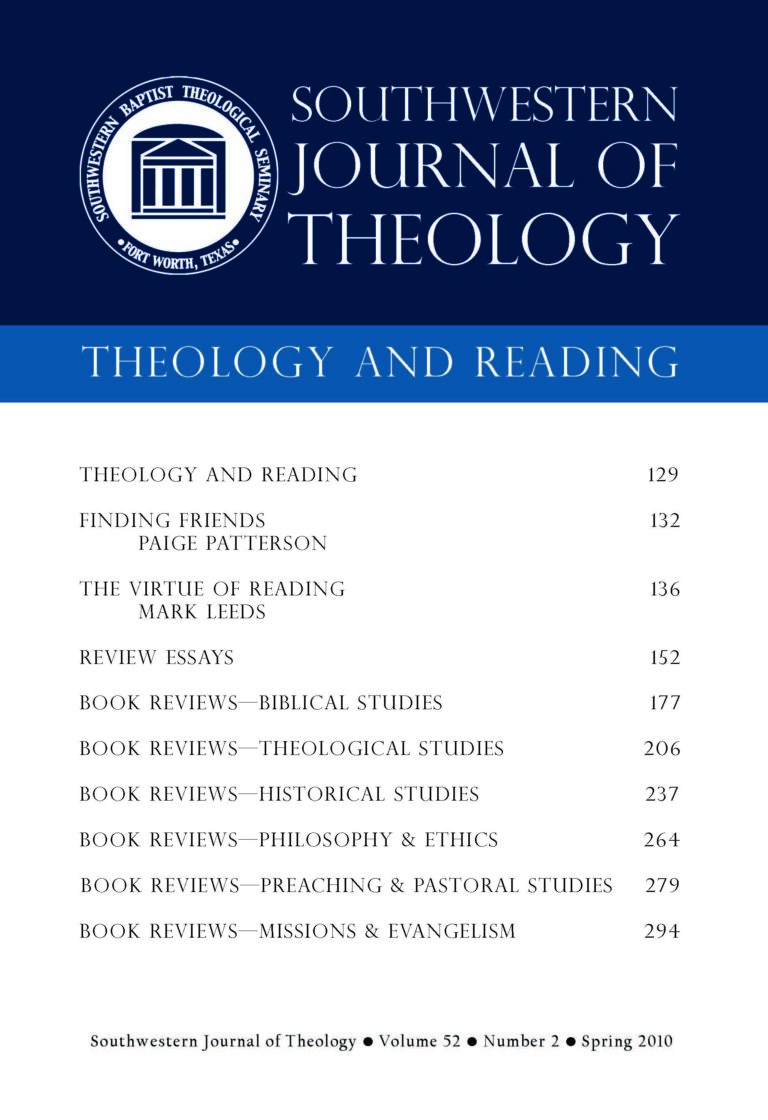
Theology and Reading
Southwestern Journal of Theology
Volume 52, No. 2 – Spring 2010
Managing Editor: Malcolm B. Yarnell III
By Paul G. Hiebert. Baker Academic, 2008. 367 pages. Softcover, $24.99.
Paul G. Hiebert’s book, Transforming Worldviews: An Anthropological Understanding of How People Change, is an excellent philosophical and sociological examination of culture that is written with the intent of showing the science (and art) involved in fundamentally reworking the outlook of a people group’s collective worldview. In light of Hiebert’s authority and credentials as a top scholar in the field of anthropology, the book possesses a unique perspective along with an expertise that is not commonly demonstrated in sociological/anthropological works that have evangelicals as the target audience.
Hiebert introduces his book by starting with a description of a worldview as “the foundational cognitive, affective, and evaluative assumptions and frameworks a group of people makes about the nature of reality which they use to order their lives” (25–26). He notes how differing people groups live in radically diverse conceptual worlds that entail multifarious metaphysical issues. Those commissioned to rewire the hearts and minds of a given people group will need to be equipped to change conceptually that group’s old thinking patterns to ways of seeing their world in a fundamentally new way, one that is predicated upon biblical revelation. In order for the process of sanctification to move towards perfection, it is necessary that the individual appropriate an entirely new conception of reality, since the “new” man sees the world in a conceptually different way from the “old.”
An important distinction that Hiebert makes is that while worldviews may be at the ground level of a people’s conception of reality, they are not defined in foundational terminology because they possess one-way causality. On the contrary, what happens at the more practical, “conditioned” level of existence can also have profound effects at the theoretical level. Hiebert is wise to point this out because he knows that missionaries must understand that in the process of engaging a culture there is the dual need of addressing the individuals at the presuppositional level and at the suppositional level. Neither exists independently of the other, nor is one causally impotent in relation to the other. The metaphysical baggage has accumulated and been reinforced at both poles of reality.
Hiebert devotes the largest portion of the book to analyzing the worldviews associated with different categories of people groups. He begins by examining the network of presuppositions driving the most primitive, small-scale societies for which there is data. He makes observations on the similarities that can be inferred about the nature of the conceptual worldview that guides the least sophisticated of people groups. He then takes a step up the developmental hierarchy to peasant societies and attempts to discern the same nuances of their theoretical outlook. He continues to the modern worldview, then to the postmodern worldview, and finally to what he refers to as the glocal worldview, the worldview that is materializing via the global economy and the information systems of the highly developed civilizations in the twenty-first century.
One of the weaknesses of the book is that while Hiebert does an excellent job of explaining the nature of different worldviews and how they seem to evolve through socio-economic phases, he does not direct the reader to those who are equipped to handle the massive project entailed in changing them to a biblical worldview. This will obviously require voluminous systematic and biblical theology, and one would doubt that he expects each missionary to do this on his own. However, he only cites a few references in this section without giving explicit recommendations except to the creeds and the history of the church and to those theologians who he believes would be the most useful in equipping missionaries for this task (of course, he may have good reasons for not doing this). Rather, he devotes a section of the book to giving a mini systematic theology of his own, but I think that it is ultimately a bit superfluous and comparatively lacking to that which a professional systematic theologian could accomplish. In light of this, the book is a little anti-climactic since technically he does not show how to transform the culture in any detailed way. The book serves more as guide of what to expect and of what you will have to deal with if you attempt to transform a culture.
Ultimately, the greatest value of this book is one of the things about which he is most adamant—the need to know how to follow up with new converts. Humans need to find patterns and categories to make sense of their reality, and upon converting to this shockingly new and exciting account of reality, there must be trained personnel who can help solidify and make sense of that new reality. This book would serve as a great preliminary study for anyone who is interested in the paradigms that guide transforming cultures.





